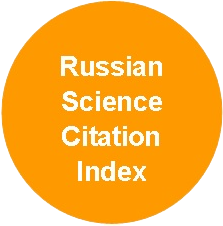The Condition of Siberian Stone Pine Forests on the Southern Border of Western Siberia Range
DOI:
https://doi.org/10.37482/0536-1036-2025-4-77-90Keywords:
Siberian stone pine, Pinus sibirica Du Tour, sanitary condition, radial increment, Siberian moth, Dendrolimus sibiricus Tschetverikov, stem pests, Western Siberia, degradation of Siberian Stone pine forests, climate change, heat wavesAbstract
Destructive processes are taking place in boreal forests all over the planet, driven and catalyzed by climate change and the subsequent impact of forest pests. In Siberia, this pattern is most pronounced in Siberian stone pine forests on the southern border of the taiga zone. Taking into account the social significance of the village Siberian stone pine forests, the aim of the study has been to assess the condition of the forest cover of the Luchanovo-Ipatovsky Siberian stone pine forest in the Tomsk Region. In 2016–2017, there were 2 foci of the Siberian moth on its territory, and subsequently, stem pests have actively multiplied. A complete ground survey has been carried out on the lands of the forest area and a visual assessment of the sanitary condition of Siberian Stone pine (Pinus sibirica Du Tour) trees has been given. 21 sample plots have been laid, 45 samples of wood cores have been taken proportionally from living, shrinking and dead trees. Also, the interpretation of satellite images of the Luchanovo-Ipatovsky Siberian stone pine forest for the period from 2015 to 2023 has been carried out. It has been established that 75 % of the forest area under study is occupied by Siberian stone pine stands. The provision of undergrowth for preliminary generations is unsatisfactory. Statistical analysis has shown that stem pests have damaged trees of different generations and different diameters (p = 0.09 > 0.05 and p = 0.30 > 0.05, respectively). The course of growth with the age trend removed in groups of trees of different conditions has revealed the absence of a reliable difference in radial increment before the mass reproduction of the Siberian moth (p = 0.06 > 0.05), but it has appeared after the population outbreak (p = 0.04 < 0.05). It was the trees weakened by the Siberian moths that have been attacked by stem pests. According to our data, the total area of 2 isolated foci of the Siberian moth reproduction has been 34 ha (10 % of the total area of Siberian stone pine stands). It was in these foci that the mass reproduction of stem pests has occurred. An assessment of the disturbed areas has shown that their size is approximately 235 ha, or 70 % of the territory of Siberian stone stands. Ground-based studies have confirmed the results of space imagery interpretation, and in the medium term, a decrease in the forest-forming role of Siberian stone pine in this forest area is expected, up to the complete destruction of pure-composition stands and the ones with significant participation of Siberian stone pine in 1/2 of the current area of these stands.
Downloads
References
Алексеев В.А. Диагностика жизненного состояния деревьев и древостоев // Лесоведение. 1989. No 4. С. 51–57. Alekseev V.A. Diagnostics of the Vitality of Trees and Stands. Lesovedenie = Russian Journal of Forest Science, 1989, no. 4, pp. 51–57. (In Russ.).
Бех И.А., Кривец С.А., Бисирова Э.М. Кедр – жемчужина Сибири. Томск: Печатная мануфактура, 2009. 50 с. Bekh I.A., Krivets S.A., Bisirova E.M. Siberian Stone Pine – the Pearl of Siberia. Tomsk, Pechatnaya Manufaktura Publ., 2009. 50 p. (In Russ.).
Глобальные изменения климата и Сибирский Федеральный округ. На пути к адаптации. СПб.: Наукоемкие технологии, 2021. 12 с. Global Climate Change and the Siberian Federal District. On the Way to Adaptation. St. Petersburg, Naukoemkie tekhnologii Publ., 2021. 12 p. (In Russ.).
Горбатенко В.П., Волкова М.А., Носырева О.В., Кужевская И.В. Современные тенденции климатических характеристик, влияющих на развитие транспортной системы Томской области // Фундаментальная и прикладная климатология. 2021. Т. 7, No 4. С. 71–95. Gorbatenko V.P., Volkova M.A., Nosyreva O.V., Kuzhevskaya I.V. Modern Trends in Climatic Characteristics Affecting the Development of the Transport System of the Tomsk Region. Fundamental’naya i prikladnaya klimatologiya = Fundamental and Applied Climatology, 2021, vol. 7, no. 4, pp. 71–95. (In Russ.). https://doi.org/10.21513/2410-8758-2021-4-71-95
Данченко А.М., Бех И.А. Кедровые леса Западной Сибири. Томск, 2010. 424 с. Danchenko A.M., Bekh I.A. Cedar Forests of Western Siberia. Tomsk, 2010. 424 p. (In Russ.).
Дебков Н.М. Основа роста и развития дендроценозов, сформировавшихся из сохраненного подроста // Вестн. Томск. гос. ун-та. Биология. 2012. No 4 (20). С. 162–170. Debkov N.M. Retrospective Analysis of Forest Stands Preliminary Generations Formation. Vestnik Tomskogo gosudarstvennogo universiteta. Biologiya = Tomsk State University Journal of Biology, 2012, no. 4 (20), pp. 162–170. (In Russ.).
Дебков Н.М., Данченко А.М. Припоселковые кедровники Томской области. Проблемы устойчивого лесопользования // Сиб. лесн. журн. 2014. No 3. С. 127–139. Debkov N.M., Danchenko A.M. The Siberian Stone Pine Stands Near Settlements in Tomsk Region. Problems of Sustainable Forest Use. Sibirskij lesnoj zhurnal = Siberian Journal of Forest Science, 2014, no. 3, pp. 127–139. (In Russ.).
Кужевская И.В., Горбатенко В.П., Носырева О.В., Волкова М.А., Нечепуренко О.Е., Чурсин В.В., Чередько Н.Н. Агроклиматические характеристики земель сельскохозяйственного назначения на территории Сибирского федерального округа в условиях изменения климата // Метеорология и гидрология. 2023. No 10. С. 77–87. Kuzhevskaya I.V., Gorbatenko V.P., Nosyreva O.V., Volkova M.A., Nechepurenko O.E., Chursin V.V., Chered’ko N.N. Agroclimatic Characteristics of Agricultural Land in the Siberian Federal District in Changing Climate. Meteorologiya i gidrologiya = Russian Meteorology and Hydrology, 2023, no. 10, pp. 77–87. https://doi.org/10.3103/S1068373923100072
Куликов М.И. Шелкопрядники таежной зоны Западной Сибири и особенности их лесовозобновительного процесса: автореф. дис. ... канд. с.-х. наук. Свердловск, 1966. 26 с. Kulikov M.I. Forests Damaged by Siberian Moth of the Taiga Zone of Western Siberia and the Features of their Restoration Process: Cand. Agr. Sci. Diss. Abs. Sverdlovsk, 1966. 26 p. (In Russ.).
Allen C.D., Macalady A.K., Chenchouni H., Bachelet D., McDowell N., Vennetier M., Kitzberger T., Rigling A., Breshears D.D., Hogg E.H., Gonzalez P., Fensham R., Zhang Z., Castro J., Demidova N., Lim J.-H., Allard G., Running S.W., Semerci A., Cobb N. A Global Overview of Drought and Heat-Induced Tree Mortality Reveals Emerging Climate Change Risks for Forests. Forest Ecology and Management, 2010, vol. 259, iss. 4, pp. 660– 684. https://doi.org/10.1016/j.foreco.2009.09.001
Born W., Rauschmayer F., Bräuer I. Economic Evaluation of Biological Invasions – a Survey. Ecological Economics, 2005, vol. 55, iss. 3, pp. 321–336. https://doi.org/10.1016/j.ecolecon.2005.08.014
Hansen M.C., Potapov P.V., Moore R., Hancher M., Turubanova S.A., Tyukavina A., Thau D., Stehman S.V., Goetz S.J., Loveland T.R., Kommareddy A., Egorov A., Chini L., Justice C.O., Townshend J.R.G. High-Resolution Global Maps of 21st-Century Forest Cover Change. Science, 2013, vol. 342, iss. 6160, pp. 850–853. https://doi.org/10.1126/science.1244693
Kenis M., Auger-Rozenberg M.-A., Roques A., Timms L., Péré C., Cock M.J.W., Settele J., Augustin S., Lopez-Vaamonde C. Ecological Effects of Invasive Alien Insects. Ecological Impacts of Non-Native Invertebrates and Fungi on Terrestrial Ecosystems. Dordrecht, Springer, 2008, pp. 21–45. https://doi.org/10.1007/978-1-4020-9680-8_3
Kharuk V.I., Im S.T., Oskorbin P.A., Petrov I.A., Ranson K.J. Siberian Pine Decline and Mortality in Southern Siberian Mountains. Forest Ecology and Management, 2013, vol. 310, pp. 312–320. https://doi.org/10.1016/j.foreco.2013.08.042
Logan J.A., Régnière J., Powell J.A. Assessing the Impacts of Global Warming on Forest Pest Dynamics. Frontiers in Ecology and the Environment, 2003, vol. 1, iss. 3, pp. 130–137. https://doi.org/10.1890/1540-9295(2003)001%5b0130:ATIOGW%5d2.0.CO;2
Martínez-Vilalta J., Lloret F., Breshears D.D. Drought-Induced Forest Decline: Causes, Scope and Implications. Biology Letters, 2012, vol. 8, iss. 5, pp. 689–691. https://doi.org/10.1098/rsbl.2011.1059
Raffa K.F., Aukema B.H., Bentz B.J., Carroll A.L., Hicke J.A., Turner M.G., Romme W.H. Cross-Scale Drivers of Natural Disturbances Prone to Anthropogenic Amplification: The Dynamics of Bark Beetle Eruptions. Bioscience, 2008, vol. 58, iss. 6, pp. 501–517. https://doi.org/10.1641/B580607
Raiyani K., Gonçalves T., Rato L., Salgueiro P., Marques da Silva J.R. Sentinel-2 Image Scene Classification: A Comparison between Sen2Cor and a Machine Learning Approach. Remote Sensing, 2021, vol. 13, no. 2, art. no. 300. https://doi.org/10.3390/rs13020300
Rinn F. TSAP V3.5. Computer Program for Tree-Ring Analysis and Presentation. Heidelberg, Frank Rinn Distribution, 1996. 264 p.
Worrall J.J., Marchetti S.B., Egeland L., Mask R.A., Eager T., Howell B. Effects and Etiology of Sudden Aspen Decline in Southwestern Colorado, USA. Forest Ecology and Management, 2010, vol. 260, iss. 5, pp. 638–648. https://doi.org/10.1016/j.foreco.2010.05.020













